Intro to Microsoft Teams
What used to be known as a tool for workplace video calls, has been developed and shaped into a one-stop-shop for your workday. Designed to make work visible and accessible to individuals and teams by enhancing people’s ability to communicate and collaborate from any location, let's look at what Teams are capable of and some of its most common and convenient uses.
What is Microsoft Teams?
Microsoft Teams is a workspace app for communication and collaboration in your organization. It keeps teams informed, connected, and organized. Within one app, users can accomplish a wide range of tasks and access a library of applications, both within and outside of Microsoft 365. Everything from calendars to meetings, files, chat, and collaboration tools, all of that and more are available without ever leaving the Teams app. Microsoft has essentially built a tool that can be used as the hub for your workday, never having to leave to access everything you need.
At a Glance
Teams offers a fairly user-friendly display, with a vertical app bar along the left side of the window, then sub-menus displayed vertically depending on which menu area you’re in. The app bar on the left covers the high-level functions:
- Activity: where you can catch up on activities from across the app
- Chat: holds all of your private conversations
- Teams: view all the Teams you are a member of
- Calendar: view your O365 calendar and schedule meetings
- Calls: view your call history or initiate a video or audio call
- Files: quickly jump to any of your recently opened files
- Tasks: view all of your tasks in one central place

Those are the apps that will be on your left panel app bar when you first access Teams, but many applications can be added, including frequently used favorites: Calendar, Calls, and Tasks.
At the top right corner of the application, you can edit your profile, as well as all the settings available to you. There’s also a search bar ever-present at the top of the application, giving you another means to quickly jump around.
Chat
One of the most used functions of Teams is Chat. Chat is mainly for direct messaging back and forth between individuals. For quick, private conversations, chat is the place. We think about chat similar to texting – a quick means to reach another person and have a conversation. Chats can be with one or multiple individuals. However, it’s important to note that if you have an active chat with a group, that conversation might be better served within a Team. The Chat interface displays all of your chats with the most recent on top. It includes chats that occurred during meetings. All chats are searchable via the search bar at the top of the window.
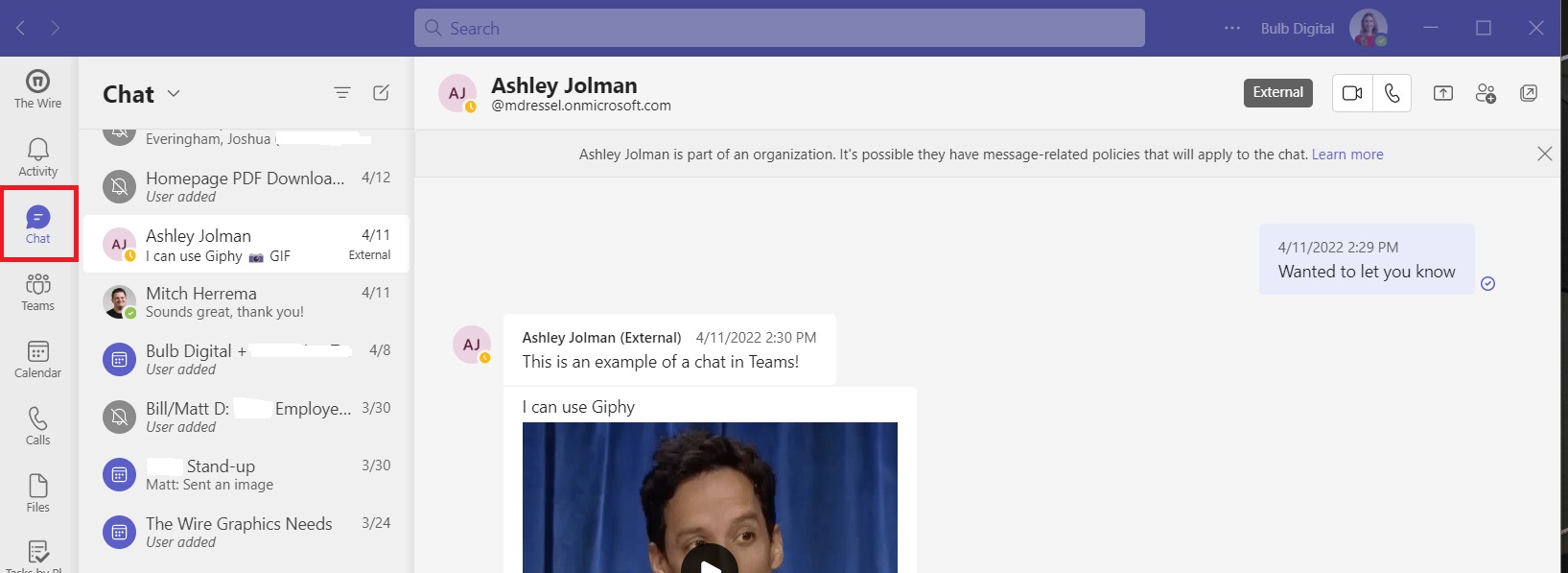
Teams
Teams are collaborative spaces to communicate and collaborate on a topic. Keeping information and conversations housed in a Team allows information flow to be transparent amongst a group. Administrators can set up new Teams and choose which individuals will be a member of that team, which keeps the Team secure, anyone who is not a member will not have access to the Team. When a new Team is created, a Microsoft 365 group is created as well as the related services. This immediately links the new Team and its members to other Microsoft applications (such as SharePoint and Planner) which unlocks endless collaboration potential as you can add these applications as tabs to enhance the functionality of your Team.
Teams are a home for Channels, which organize work and conversations. When a new Team is created, it comes with one channel called General. More channels can be created once the group determines how they want to organize, as the channels will likely be a particular focus or project for that team. Some channels could be just for fun, maybe about a different area of interest. Every channel within a Team is accessible to all members of the Team. An admin can create private channels within a Team, this is the only way to restrict access from other members of the Team. Here is an example Team set up with various channels underneath:
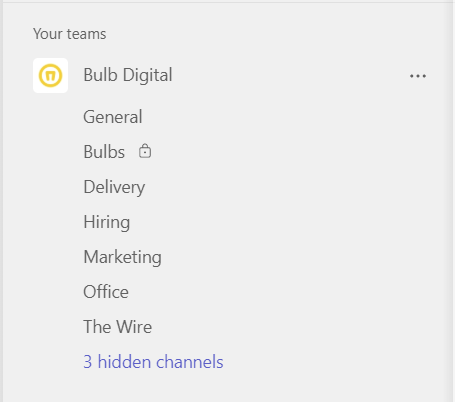
Tabs
Each new channel provides tabs horizontally at the top of the window:
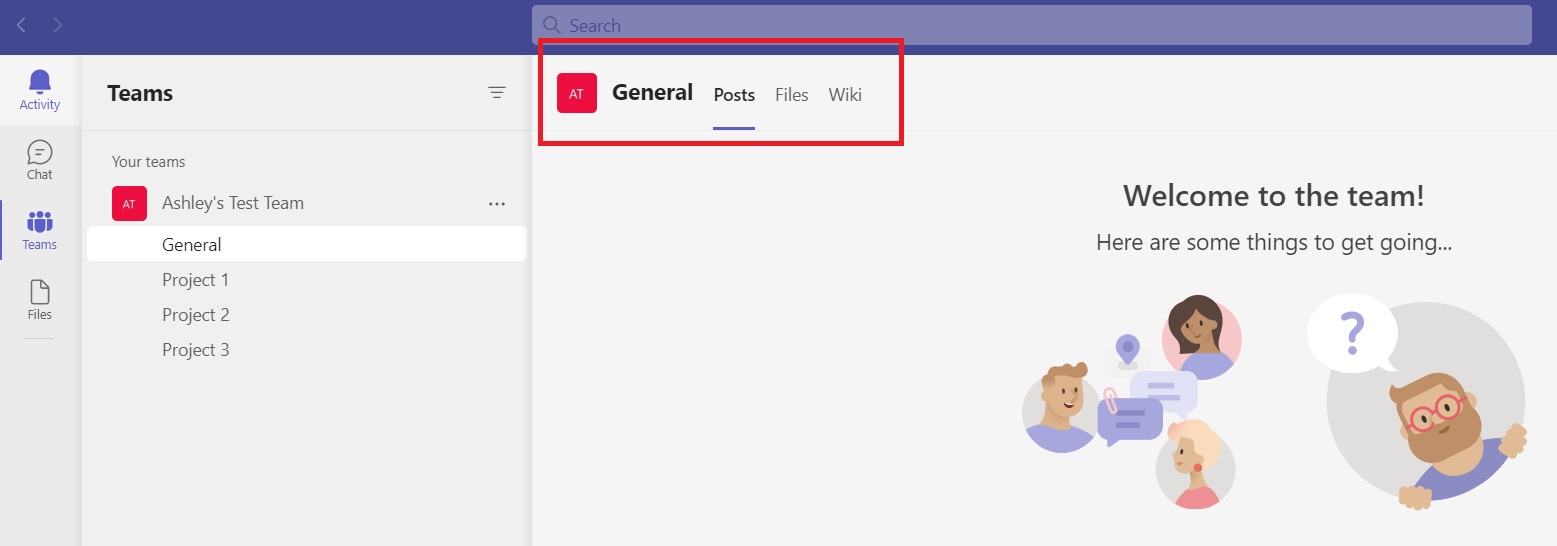
The three tabs provided are Posts, Files, and Wiki:
Posts
Here is where the Team can communicate. Members create new conversations concerning the channel topic, and all members can respond. This area supports everything from quick chats, collaboration on files, or full announcements. Conversations are transparent to the rest of the team who may find them valuable in their work, as well as easily referenced later. Team members can also be tagged in posts, to ensure items are seen.
Files
Whenever you create a new channel in teams, a SharePoint site is automatically created and connected to the “files” tab. Each channel is a different document library that can be organized however you want. Documents stored here can be co-authored by anyone who has access to the channel. You can store, access, and co-author Word documents, PowerPoint decks, Excel spreadsheets, and more, all without leaving the channel in Teams. Your team will always have access to the most current version of any document, with no saving and no emailing back and forth. Documents can also be discussed in the posts tab of the channel so that teams can communicate about documents, again, without leaving Teams and without storing documents in separate places.
Wiki
This is a location for meeting minutes and any other documentation related to the channel. Again, it keeps notes visible to your entire Team so that everyone has access to information they need to do their job or to contribute to the topic at hand
Tabs can be added and customized endlessly. Teams connect to any of your most-used apps, which keeps them accessible and keeps work visible to your team. Utilizing the channels and tabs available in Teams is a powerful tool in keeping groups working together smoothly, as work is visible and current information is accessible to all.
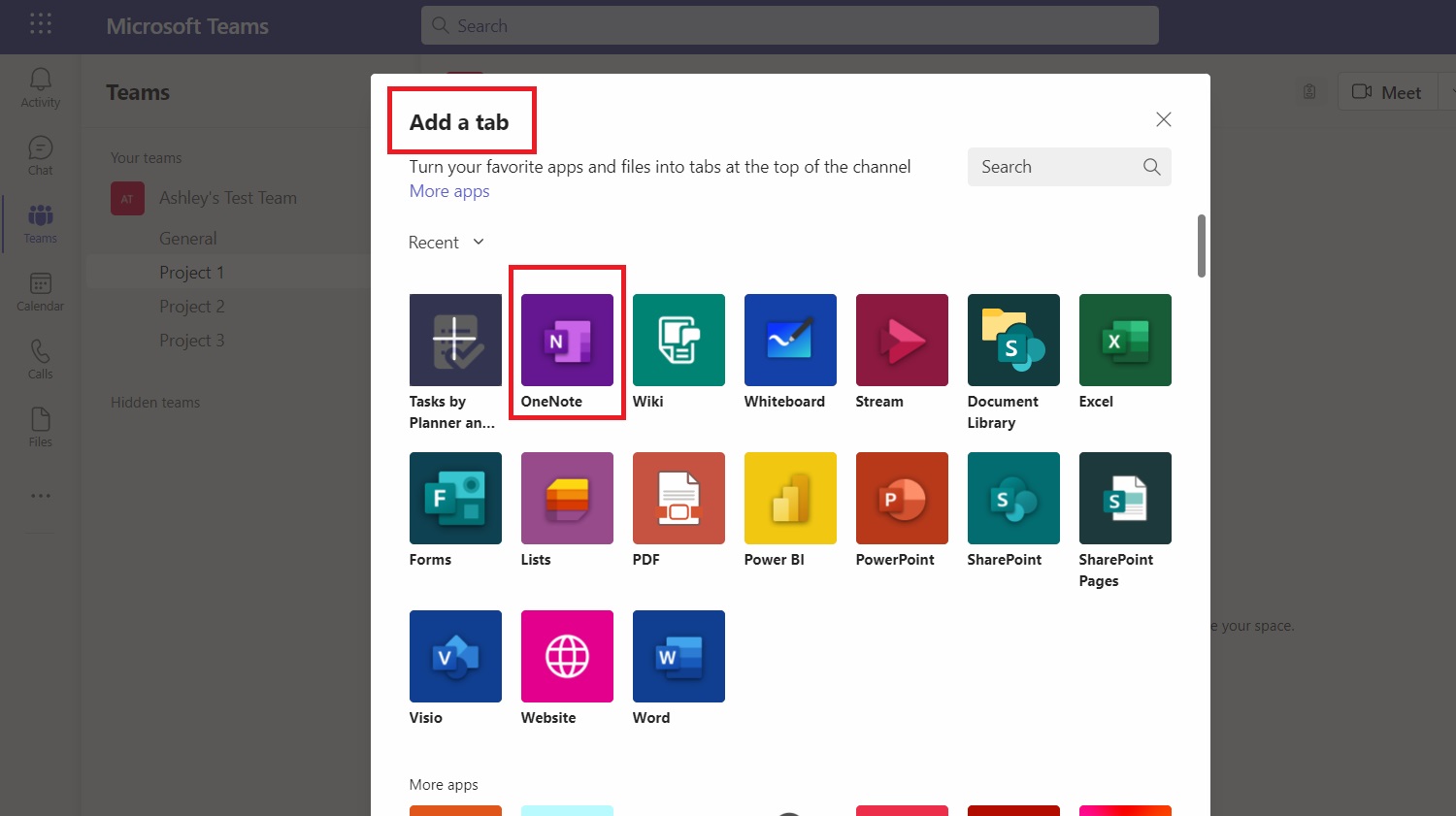
Calls
Many users first start using Teams as a conference call mechanism. Teams is a quick add-on option in Outlook for users who schedule meetings from their Outlook Calendars. Calls have a full set of features from video, breakout rooms, chat, and even fun backgrounds. Teams have rolled out a lot of additional functionality to their calls, which is why it’s the go-to tool for many organizations. From the Calls tab in Teams, a user can make a video or audio-only call to someone in their organization with just one click. There’s also the `Meet` button at the top of every channel, clicking this allows you to quickly jump on a call with the other members of that channel. This is also referred to as a "channel meeting", and is a great way to quickly align on any work that may be occurring in the channel.
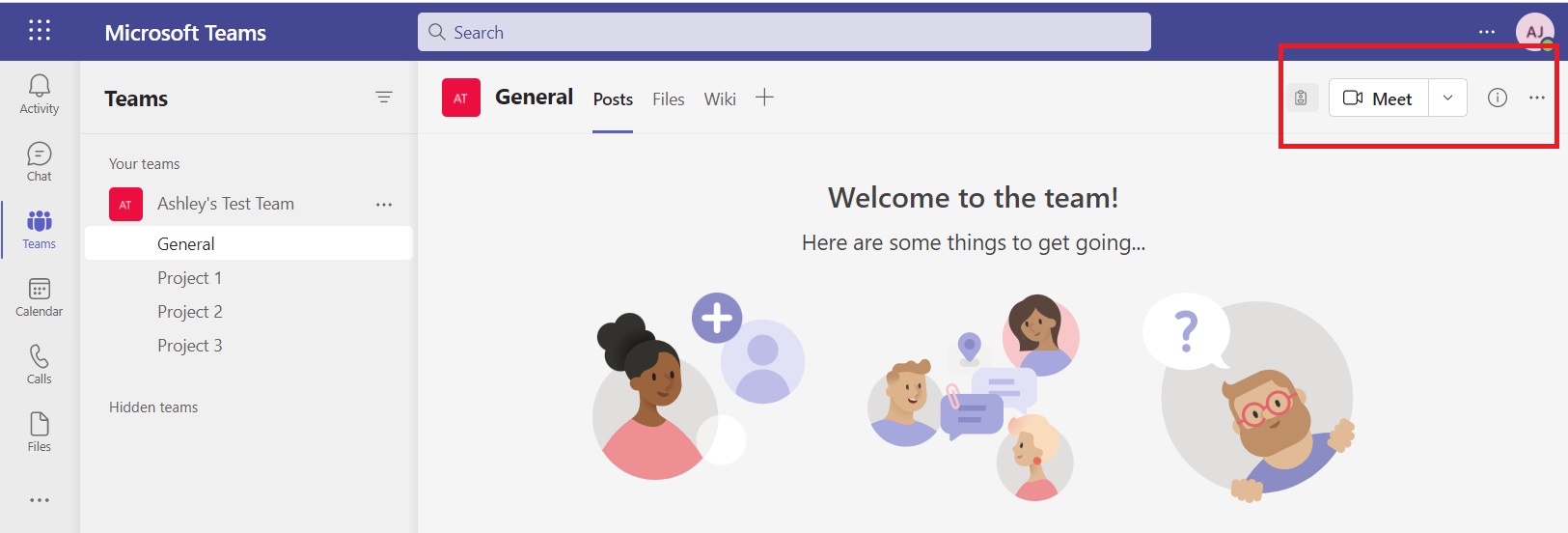
Calendar
The calendar section of Teams allows you to view, schedule, and manage all of your appointments and meetings. This calendar syncs with your Outlook calendar. The functionality of this calendar will feel familiar if you’re used to Outlook. You can double click into any existing meetings to view details and add a response. There are two quick jump buttons at the top of the window: Meet Now and New Meeting. This is where you initiate an immediate meeting or schedule one for the future. Anyone can be invited to a Teams meeting, even if they don’t use Teams, simply invite them using their email address and they’ll receive the appropriate link.
Calendar View:
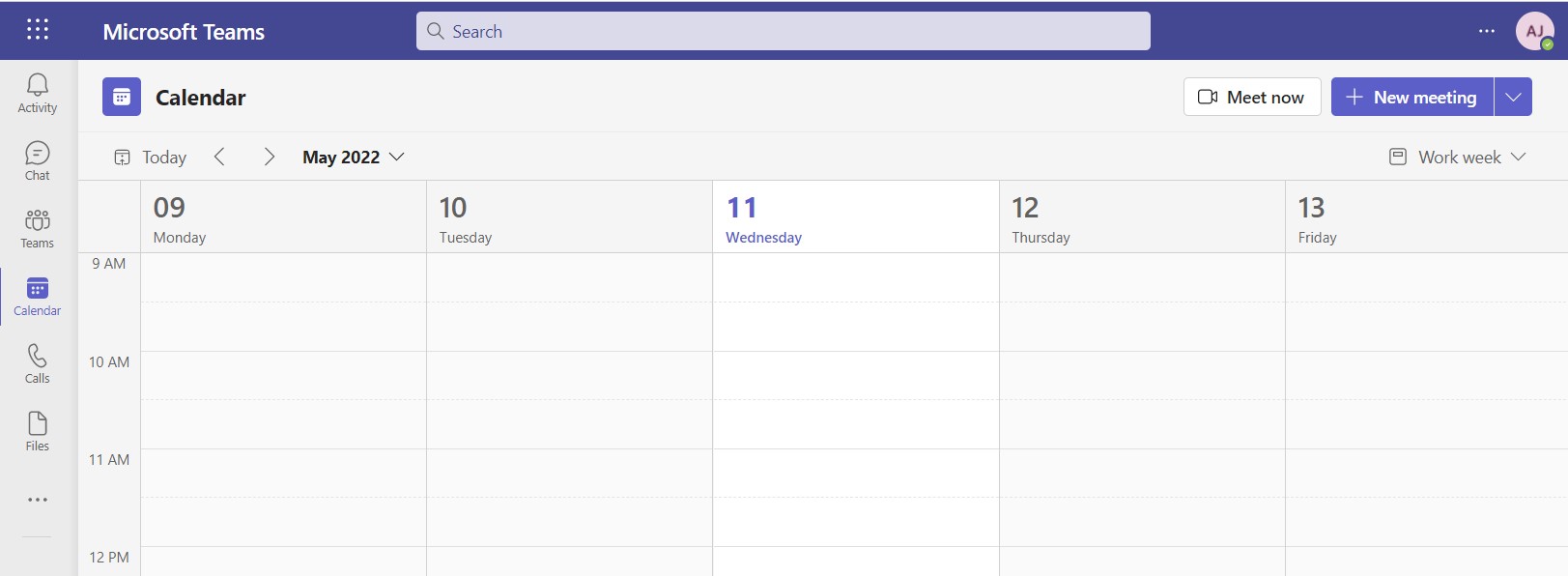
Schedule a New Meeting:

Ad-hoc meetings are made easy in Teams – not only can you choose ‘Meet Now’ from the Calendar panel, but when you’re in a Chat or a Channel, you also have a ‘Meet Now’ button.

Notifications
To manage your notifications in Teams, select `Settings` from the drop-down menu under the ellipsis in the upper right-hand corner of the window.

Here you will find an array of customizable options. You can select how and when you want to be notified about activity in Teams, to make sure you never miss information you need. You can customize what you are notified about (calls, channel activity, etc), but also how you are notified (sound, pop up, etc). You can also select to silence notifications during calls so that you aren’t distracted or interrupted in a meeting. Notifications can be customized within specific conversations or channels, so definitely take some time to explore all of the options so that Teams work best for you.
Accessibility
Teams is available via the Web App, Desktop App, or Mobile App, and therefore can be accessed anytime, from anywhere, or on any device. There are some feature differences between the versions, with the desktop version thought of as having the full feature set with the best performance. The mobile app is quite robust and perfect for working or communicating on the go.
Conclusion
Microsoft Teams takes collaborative workspaces to the next level. It serves as your central hub for chat, conversations, collaboration, files, meetings, and more. It’s designed to enhance productivity in a remote or hybrid environment by streamlining the tools you use in one central space. The capabilities of Teams should serve anyone’s work style or space. If you are still using Teams mostly for video conferencing, definitely explore some of the other capabilities and see what pain points Teams can tackle for you.

SELF ASSESSMENT
Is your business getting full value from your M365 subscription?
Billions of dollars are wasted each year on underused subscriptions. Take 3 minutes to find out where your tools are driving results, and where they’re holding you back.
Find Out Now

Is Team Communication Holding You Back?
Find Out in Just 2 Minutes.
Take our quick scorecard to uncover communication gaps and hidden barriers within your team.




.avif)

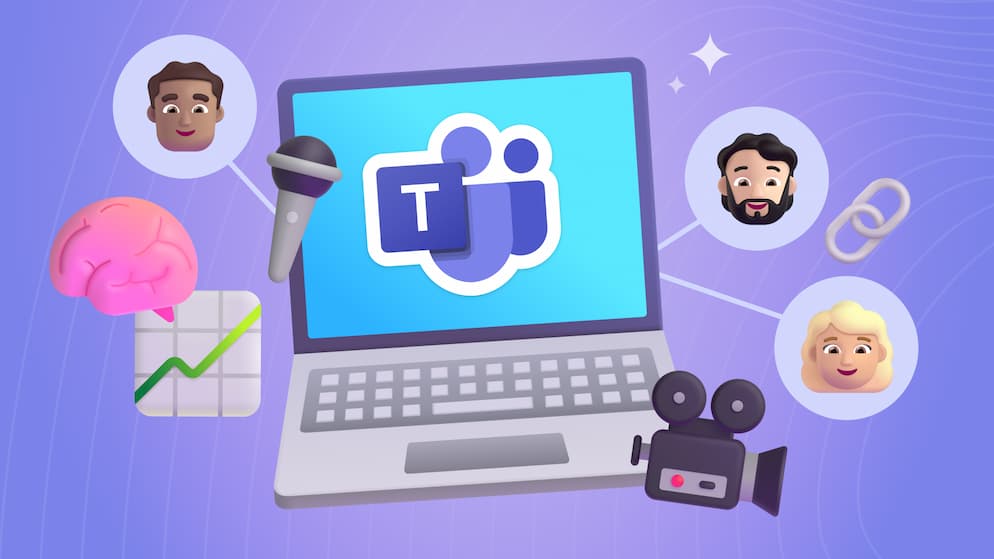

.avif)





